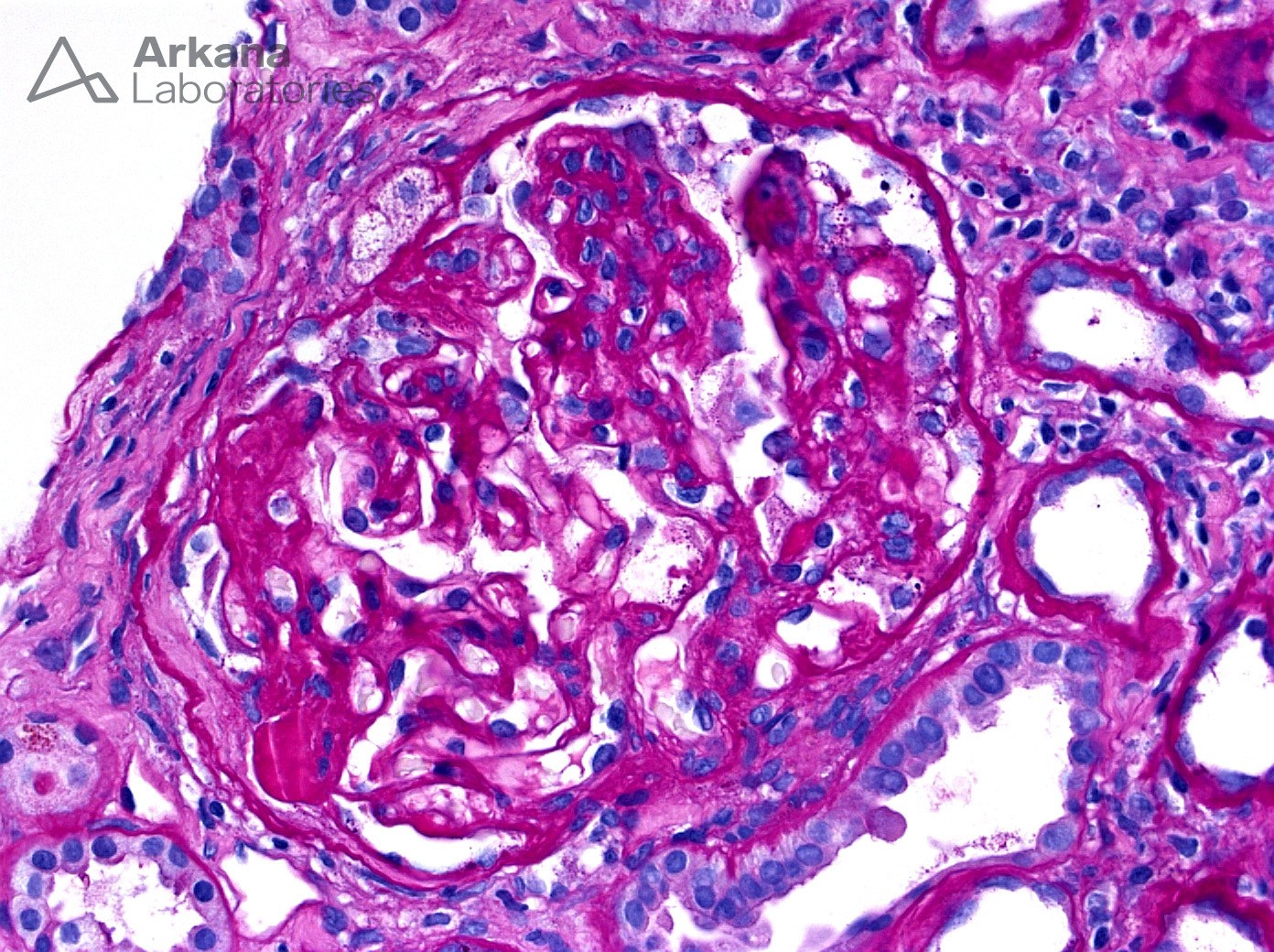Focal segmental glomerulosclerosis (FSGS) is a nonspecific pattern of glomerular scarring in which a subset of the glomeruli show partial involvement of the glomerular tuft. It should not be confused with a specific disease. The differential diagnosis is too long to include here but includes genetic etiologies, primary injury to podocytes, and adaptive responses to diseases such as hypertension and obesity. Clinicopathologic correlation can be useful to identify patients with primary FSGS. Specifically, primary FSGS is more likely if >80% foot process effacement is present by electron microscopy and the clinical evaluation reveals nephrotic syndrome (not just nephrotic-range proteinuria) including proteinuria >3.5 g/24 h, peripheral edema by physical exam, and serum albumin .5 g/dL. Full nephrotic syndrome is frequently not present in adults with FSGS due to a genetic etiology. If suspected, testing for possible disease-causing genetic variants of the disease can be performed. The clinical application of new sequencing technologies now makes it possible to interrogate the more than 30 genes described in association with FSGS in a single test.
Reference:
Sethi S, Glasscock RJ, Fervenza FC. Focal segmental glomerulosclerosis: towards a better understanding for the practicing nephrologist. Nephrol Dial Transplant 2015; 30: 375-384.
Quick note: This post is to be used for informational purposes only and does not constitute medical or health advice. Each person should consult their own doctor with respect to matters referenced. Arkana Laboratories assumes no liability for actions taken in reliance upon the information contained herein.


